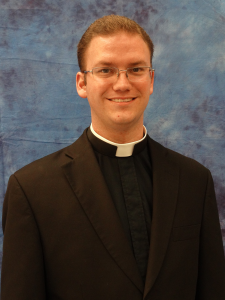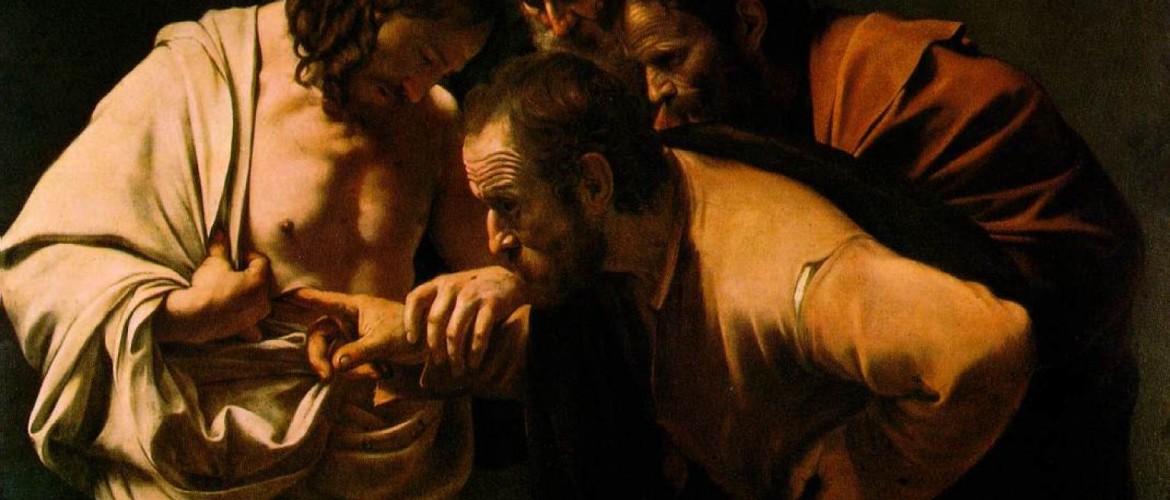By: Deacon David Ducote, Archdiocese of New Orleans
The other day I was watching the movie “Jaws” and began reflecting on one of my favorite scenes. This is the scene towards the end of the movie where Brody (Roy Schneider), Quint (Robert Shaw), and Hooper (Richard Dreyfuss) are on the Orca searching for the great beast. They are sitting in the cabin drinking and start comparing scars and sharing the stories of how they got them. It is not uncommon for men to do this. It is not uncommon for men, especially after a few drinks, to share their “war stories” and compare their scars and the stories of how they got them.
In the opening line of the Preface of his book, Life of Christ, Venerable Fulton Sheen says, “Satan may appear in many disguises like Christ, and at the end of the world will appear as a benefactor and philanthropist – but Satan never has and never will appear with scars.” These “scars” play a prominent role in today’s Gospel. Jesus appears for the second time to his disciples one week after his first appearance. We all know this story well. Thomas, who was not present at the first appearance doubts and says, “Unless I see the mark of the nails in his hands and put my finger into the nail-marks and put my hand into his side, I will not believe.” It is because of this comment that Thomas receives the infamous label of “the doubter.” But for this appearance, Thomas is present and upon seeing him, Jesus says, “Put your finger here and see my hands, and bring your hand and put it into my side, and do not be unbelieving, but believe.”
Unfortunately we are usually so busy beating up on poor Thomas that we fail to notice the implications of Jesus’ words. Jesus’ hands and feet and side still bear the marks of his crucifixion! We should immediately ask why the glorified body of Jesus still bears the marks of his death. Wouldn’t these marks be healed in the glorified body? It is true that there is little that we know about the nature of a glorified body. After all, the only examples we have are those of our Lord himself and his Blessed Mother and neither of them are exactly around here for us to examine scientifically. One would think that these marks would no longer appear on his body after the Resurrection, but apparently that is not the case. So why does Jesus’ body still have these marks?
I would like to suggest that Jesus still bears the marks of his crucifixion because these are not marks to be ashamed of or hide. The crucifix was meant to be a great sign of defeat, but Jesus used it as a weapon, the weapon that won him his victory over sin and death, so these are the scars he received to achieve that victory. These are the battle scars that he bears on his body and wears as a badge of honor as proof of his victory over death and the devil.
But this is not something that pertains to Christ alone. The followers of Christ will also be known by their scars. We can see this in the sacred art depicting the martyrs. For example, St. Lucy, the virgin martyr who had her eyes cut out while professing Christ, is frequently shown holding her eyes on a plate. The same is true of St. Agatha who likewise is depicted carrying her breasts on a plate after having them cut off by her executioners because of her faith in Christ. And who can forget the image of St. Bartholomew in Michelangelo’s masterpiece, the “Last Judgment,” in the Sistine Chapel who is depicted as carrying his skin after it was cut from his body by his murderers. The Saints too carry on their bodies the scars from the battle that won them their victory like our Lord. They fought the good fight, they ran the race, they kept the faith (cf. 2 Timothy 4:7), and they have the scars to prove it. Now of course they don’t go around trading stories of how they got their scars as in that scene from “Jaws.” This would smack of pride and vanity. But they proudly bear these marks nonetheless as signs of the conformity of their death to the death of their Lord.
Now most of us will not be martyred. We are not going to be executed for our faith. But this does not mean we are not in a battle. Very often we refer to the Church here on earth as the “Church Militant.” This is because the faithful here on earth are soldiers in a very real battle, a battle against the Satan and sin. And in the many battles against sin that we face in life, sometimes we will be wounded when sin appears to get the upper hand. But we know that in the end we will be victorious because Christ has already won the victory. We win, but that doesn’t mean we will be unscathed. But while we may be wounded, these wounds will heal and they will leave scars marking forever the battles we fought and the times we were victorious. The question then is what scars will we have to show for ourselves when we stand before the throne of God and give an accounting of our life? We might be tempted to avoid these fights because they are difficult and take a lot of energy and effort. But this is not the call of Christ. Jesus calls us to pick up our crosses just as he did and enter into battle. So when you stand before God, what scars will we have to show for ourselves from the battles you faced in this life?
About the Author: Deacon David Ducote, Archdiocese of New Orleans

Deacon David is currently in his final year of theological studies at Notre Dame Seminary. He was born and raised in the New Orleans metropolitan area and has resided there his whole life. Deacon David entered Notre Dame Seminary for the Archdiocese of New Orleans in 2010 after completing his B.S. degree in Mechanical Engineering at the University of New Orleans. He was ordained to the Diaconate on May 23, 2015 and will be ordained a priest on June 4, 2016.
Disclaimer
All opinions published by the authors on this blog are solely those of the authors. Although the goal is that they should, they do not necessarily express the views and opinions of the Archdiocese of New Orleans, Notre Dame Seminary, the Church, or their respective dioceses and bishops.
Notre Dame Seminary and the Archdiocese of New Orleans are not responsible for the comments of commenters, although every effort will be made to remove offensive comments.
If you should find an error or offensive content, please email the NDS Blog editorial team.

